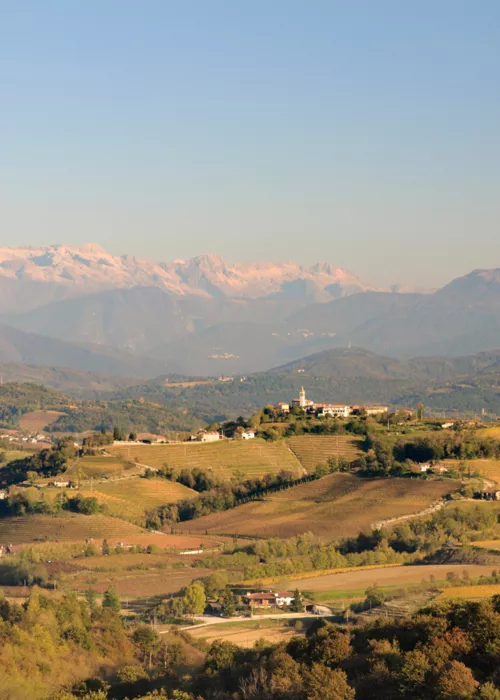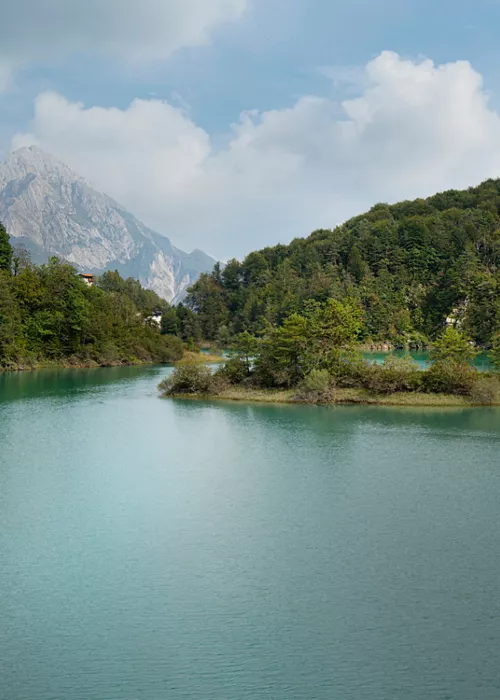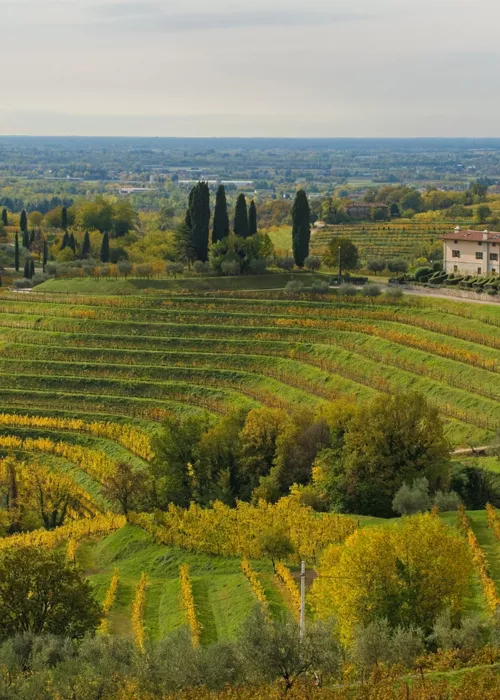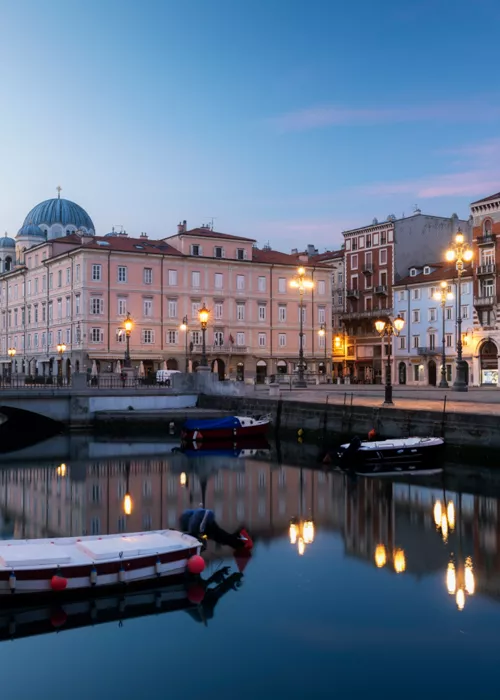Porcia

The all-Friulian brotherhood between water and wine begins in Porcìa, which is not difficult to reach because it corresponds to a toll station along the A 28 motorway between Pordenone and Conegliano. The waters to be appreciated may very well be those of the pretty Lake Burida not far from the centre: it is a good place in which to relax, paddle, photograph swans or ducks and let the children play. As for wine, it is easy to find it: just sit at a table in a restaurant, visit the castle cellars in search of a Refosco, or head directly to the producers in the surrounding countryside. Where you see vines, there's nothing stopping you from stopping and asking.
If, on the other hand, one wishes to dedicate oneself to culture, the historic centre of Porcìa is not lacking in interesting corners, starting with the Clock Tower, which gives access to the porticoes of Via Marconi. The parish church of San Giorgio and its bell tower are more eyecatching than the castle, robust but greatly transformed in its ten centuries of life.
Sacile

Along the Livenza river, we arrive in Sacile, in a watery environment that makes it the most "Venetian" town in the whole of Friuli. Have a stroll, take some pictures, look for a place to sit and have a drink: there is really no reason to be in a hurry. A world of bridges, squares, churches with large period canvases, and house-foundations where goods were brought in from the streets or canals below, and people lived above. The entire historic centre is made up of two large islands on a deep bend in the river, with two quarters, one accommodating the political and the other the religious power.
On the flat skyline towers the bell tower of the Cathedral of St Nicholas Bishop: on its top is an archangel that turns according to the direction of the wind, as is often the case in churches in Friuli. This is another historical landmark of Venice, where the sacred female figure of the Madonna was considered the "Capitana da Mar" private property of the ruling city. On the steeples of the mainland it was preferable to have the angels ascend.
You can also cover a few kilometres in the direction of Conegliano by heading to Vistorta, a small mediaeval village. Here you will find Villa Brandolini d'Adda Varda. The villa was purchased in 1780 by the patrician Venetian Brandolini family. Here, you can admire rare orchid varieties, while in the garden, trees dating back to the 19th century, small lakes, a stream and bamboo patches create a very charming environment. It is private property, therefore it is advisable to enquire about visiting arrangements before going there.
Polcenigo

Just north of Sacile, Polcenigo is an area where the waters spring up from the ground. A short distance from the provincial highway coming from Càneva, you'll find the source of the River Livenza and the crystal-clear Gorgazzo springs up from from a karst cavity near the town and, in turn, feeds the Livenza. The river flows through Polcenigo itself, reflecting the houses and letting itself be viewed from the riverside railings. Also in the area, Unesco protects the traces of prehistoric pile dwellings discovered at the Palù di Livenza nature oasis.
Centuries of trade along the inland waters explain an economy that was able to build palaces and embellish churches with art. When the maritime wealth of Venice ceased to supply the mainland at the end of the 18th century, the gastronomic professionalism of the local residents took over. These episodes are documented in the Alto Livenza Culinary Arts Museum.
Continuing along the Pedemontana provincial highway 29, we pass by Aviano at the foot of the Piancavallo alpine ski resort. Further on, near Montereale Valcellina, another highly recommended climb branches off towards Lake Barcis.
Maniago

Scythes, saws, blades, sharpeners and above all knives. Don't worry, there's nothing hostile or warlike about the wares which have been produced in Maniago for centuries. We're talking about everyday utensils used for working, cooking and growing crops. There's nothing remotely bellicose about the knife museum either. The Museo dell’Arte fabbrile e delle Coltellerie, housed in an old factory, is filled with lifesize reproductions of craftsmen bent over their machines, beavering away to produce the items that made the town famous, and historic documents testifying to the local tradition. Until recently, knifesmiths' workshops could be found in almost every home and courtyard, but dozens of metalworking and bladesmiths' firms are still very much active in the local area.
Thanks to a vibrant and well-preserved historic centre, this little town has earned itself an Orange Flag from the Italian Touring Club. You'll certainly want to stop to admire the Palazzo d’Attimis with one of St Mark's lions painted on the facade, before entering the Cathedral of St Maurus to see the 15th and 16th-century artworks. Then from the square, you can climb up to see the ruins of the castle, with its view of the Friulian plain.
Beyond the nearby Meduno, other fantastic views are to be had from the Clauzetto hill, as well as an opportunity to explore the depths of the Pradis caves.
Spilimbergo

Already during the centuries of Venetian rule, the medieval town of the Counts Spengenberg had developed into the authentic centre of art that it is today. Friuli has often specialised in fine local monocultures, for example, the cutlery in Maniago or the chairs in the Gorizia Collio, but Spilimbergo in particular has become famous for its mosaic workshops. Perhaps the first thing to be curious about here is the Friuli Mosaic School.
Other colours are those of the spectacular frescoes both in the Cathedral of St. Mary Major and outdoors on the castle fronts, all places where the two dimensions of the paintings are well complemented by the third of sculpture and architecture. However, the Ariadne's thread of discoveries cannot give up the towers, arcades and palaces to be recognised along Corso Roma.
Spilimbergo is not far from San Daniele del Friuli, home of prosciutto, and the Strada dei Vini delle Grave. A cow's milk cheese with a strong and slightly piquant taste that comes from Clauzetto and Vito d'Àsio.









